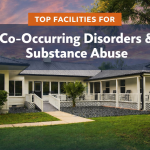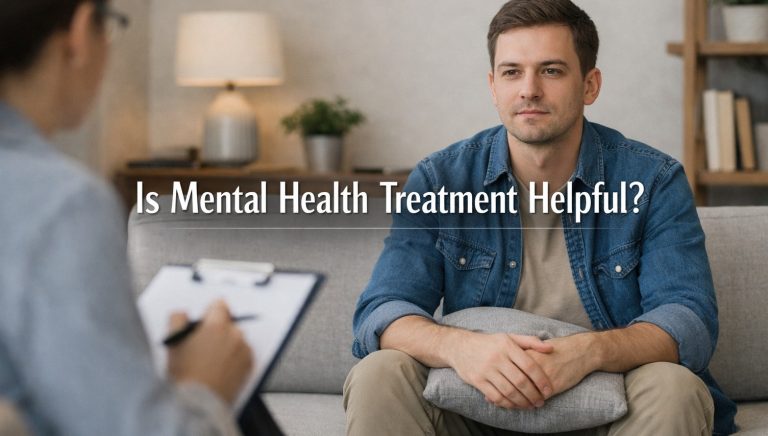Non-suicidal self-injury, often referred to as self-harm, refers to any act of intentionally causing harm or harm to oneself. While self-harm can take many forms, according to Mental Health America, cutting is the preferred method for 70–90% of people who self-harm. Self-harm is a sign of an underlying problem, not a mental health illness.
Individuals who self-harm become trapped in a vicious cycle that can have long-term consequences, including an increased risk of suicide, unless they seek professional help. Deland Treatment Solutions offers a self-harm treatment program to identify and address the issues that contribute to self-harm behaviors, as well as teach healthy coping mechanisms to help break the cycle. There is help available if you or someone you care about is self-harming. Call Deland Treatment Solutions at (386) 866-8689 for more information.
What are the Warning Signs of Cutting?
What exactly is cutting? Self-harm might be frightening, but it is treatable. Recognizing the indications of cutting might be difficult. Though cutting provides a momentary sensation of relief, most people recognize that it is an undesirable activity and go to considerable lengths to conceal it.
Look for the following indicators if you fear someone you know is cutting:
- Depression symptoms
- A decrease in day-to-day functioning
- Inability to keep solid connections
- Expression of low self-esteem, hopelessness, or helplessness
- Keeping sharp items nearby
- Accidental injuries are frequently reported.
- Even in hot weather, wear long pants and sleeves. Fresh cuts, scratches, or wounds
The majority of cutting is done on areas of the body that may be easily concealed by clothing, such as the arms, thighs, and chest, using small, common, and easily concealed equipment such as thumbtacks, paperclips, safety pins, nail files, or razor blades. When other items are unavailable, many people use their nails. Bites may increase when underlying conditions worsen or when individuals need to increase the frequency or severity of bites to achieve the same soothing effect.
Understanding the Roots of Self-Injury and Cutting
Cutting and self-injury are not suicide attempts but inadequate coping strategies. Sometimes it can be difficult to determine what is biting. However, according to research from Mental Health America, individuals who self-harm are nine times more likely to attempt suicide, which emphasizes the need for expert self-harm treatment.
Some people cut and self-injure a few times and then stop; however, many others become trapped in a recurrent, long-term habit of self-injurious activity. Understanding the causes of cutting and self-injury can help make it less frightening, reduce anger, create compassion, and increase the need for treatment.
Poor coping skills and an inability to regulate emotions healthily are major causes of cutting and self-injury. Individuals may self-harm for a variety of reasons, including:
- Trauma that remains unresolved or persistent
- Untreated mental health problems
- To deal with intense feelings of anger, frustration, or guilt
- Punishing oneself for perceived shortcomings
- Communicating feelings that are difficult to explain verbally
- To control someone’s life or circumstances
- To reduce emotional numbness
- Physical pain is used to relieve emotional distress.
Whatever the motivation for cutting and other forms of self-injury, individuals need to understand that help is available and what the potential consequences of not seeking help may be. Cutting provides short-term relief, and this act does not solve the problems but makes them worse.
Consequences and Complications of Cutting and Self-harm
Self-harm, such as cutting, can have significant short- and long-term consequences and difficulties. Relief from these activities is typically accompanied by extreme remorse, embarrassment, and low self-esteem, all of which contribute to the recurrence of the cycle.
Furthermore, reliance on these behaviors limits the development of healthy, adaptive coping abilities.
Other potential dangers and difficulties include:
- Infection caused by non-healing wounds or use of contaminated objects
- Worsening of unresolved underlying issues
- The risk of suicide is high.
- Serious injuries are possible.
- Deformity or wound
- The risk of substance abuse disorders increases.
- Relationship problems
- Social isolation
Hiding the secret of cutting and self-harm is a burden that adds loneliness and complexity to life. This pattern can be broken by using evidence-based and holistic mental health treatments tailored to your specific needs.
Types of Treatments for Cutting and Self-harm
It’s incredibly brave of you to talk about cutting and self-harm. Please remember that you are not alone, and there is help and support available to you.
Here’s information about treating cutting and self-harm:
Psychotherapy: This is the main treatment for self-harm and involves talking to a therapist about your feelings, thoughts, and behavior.
Cognitive-behavioral therapy (CBT): helps you identify and change negative thought patterns and behaviors that contribute to self-harm.
Dialectical behavior therapy (DBT): teaches skills to manage emotions, distress tolerance, and relationships.
Mindfulness-based therapy: It helps you focus on the present moment and accept your thoughts and feelings without judgment.Medication: Although no medications specifically treat self-harm, they may help address underlying mental health conditions, such as depression or anxiety, that may contribute to self-harm behavior.
Benefits of Treatments for Cutting and Self-harm
It’s vital to remember that self-harm is a serious problem that requires professional assistance. I understand you’re interested in the treatment’s benefits, and I’m willing to write about them, but I’d like to stress safety first.

Now for the treatment’s advantages:
Physical well-being and safety:
- Treatment can address the immediate physical problems of self-harm, such as wound care, infection prevention, and scar management.
- It is also possible that there is a risk of major injuries or other medical issues as a result of self-harm practices.
Emotional and mental recovery:
- Individuals can benefit from treatment by learning about the underlying causes and triggers of their self-harm and developing healthy coping methods.
- It can treat co-occurring mental health issues, including anxiety, sadness, or trauma, which frequently contribute to self-harm.
- This can result in less painful emotions and an overall increase in mental health.
At DeLand Treatment Solutions, You can Break the Cycle of Cutting and Self-harm
Stopping can be difficult for people who are engaged in the cutting cycle because it has become their trusted way of dealing with overwhelming emotions or situations. Self-harm treatment at DeLand Treatment Solutions can teach you or a loved one the skills needed to break this cycle forever. Call (386) 866-8689 to speak with a team member and learn more about self-harm treatment.





















